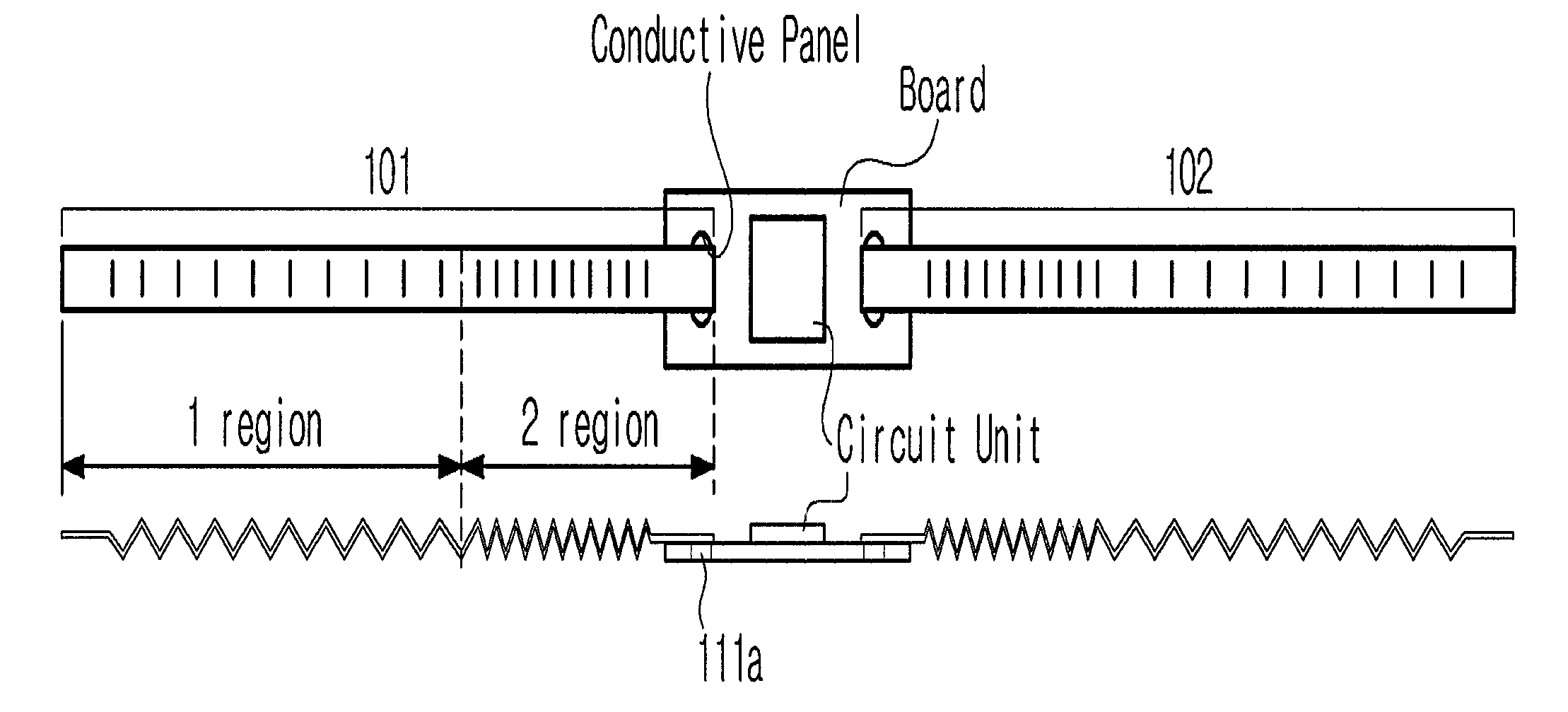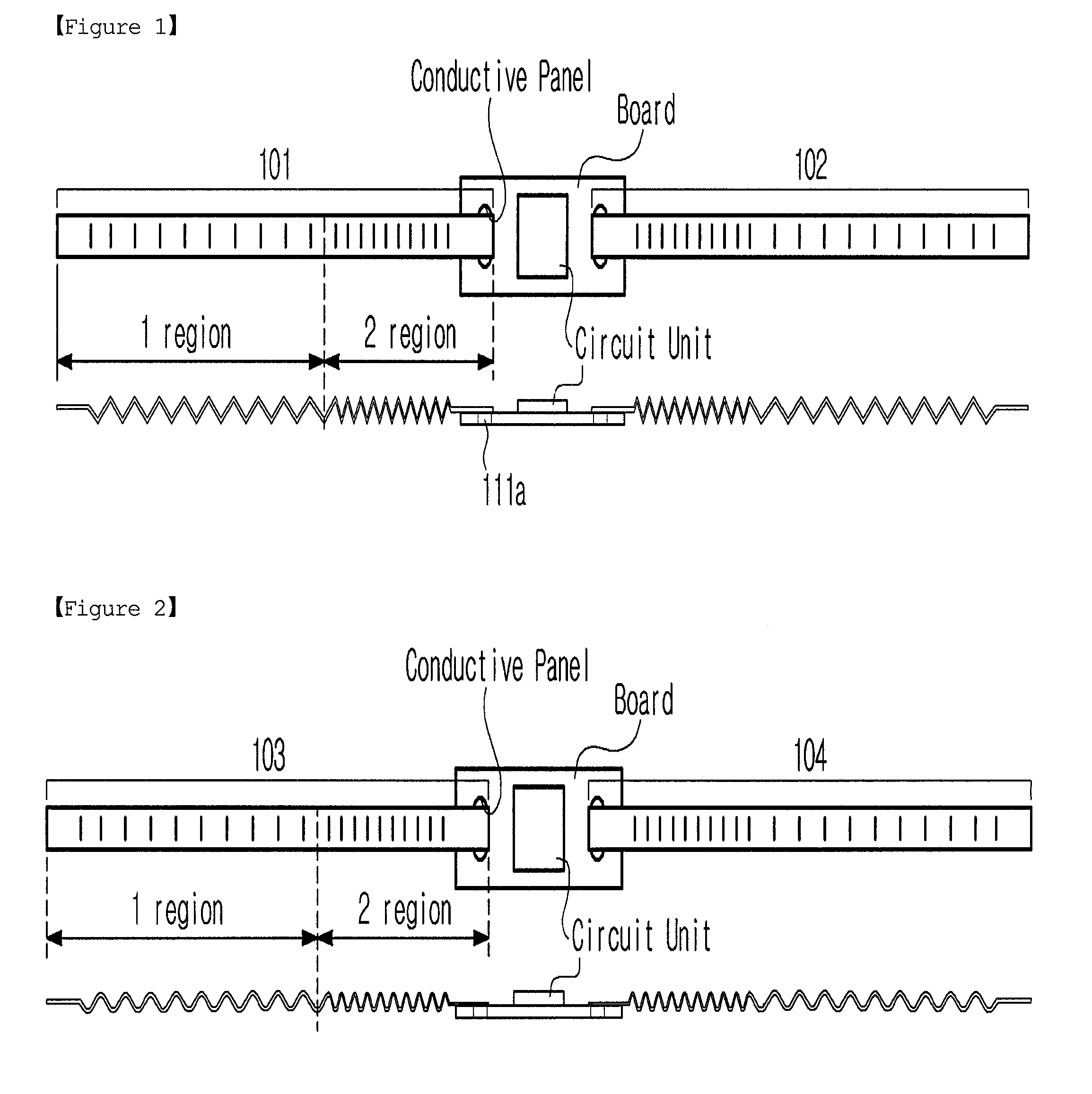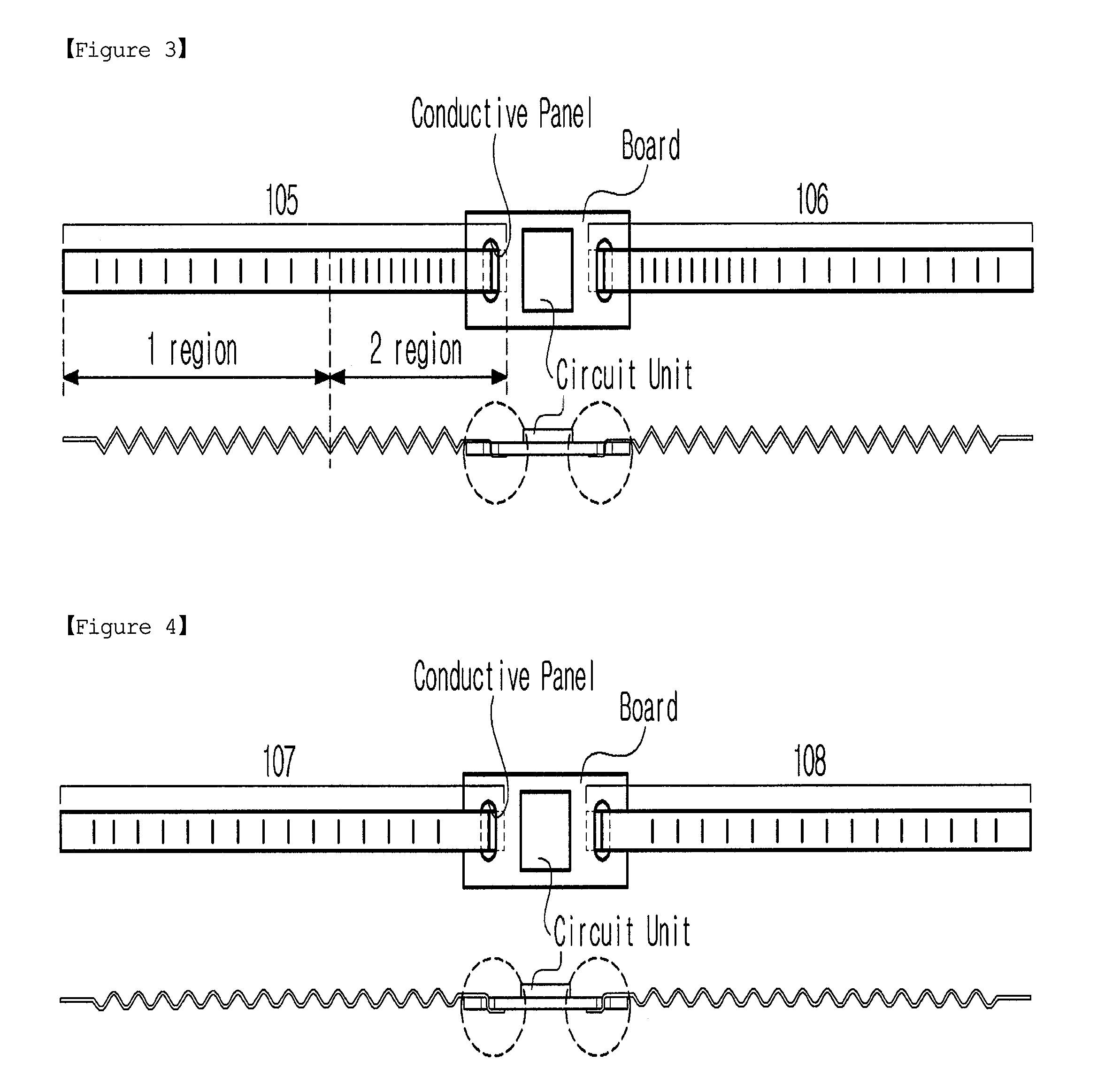Tire Built in RFID Tag
a tire and rfid technology, applied in vehicle components, instruments, computing, etc., can solve the problems of reducing the quality of the tag, increasing the cost of the rfid tag itself, and the inability to mount three-dimensional rfid tags to some articles, so as to reduce the capacitive reactance of the circuit unit
- Summary
- Abstract
- Description
- Claims
- Application Information
AI Technical Summary
Benefits of technology
Problems solved by technology
Method used
Image
Examples
Embodiment Construction
[0049]The present invention is described in detail with reference to the accompanying drawings below.
[0050]FIG. 1 shows an RFID tire tag according to an embodiment of the present invention.
[0051]The RFID tire tag, shown in the drawing, includes a circuit unit, and a pair of tag radiators 101 and 102, which are configured to resonate with radio waves that are transmitted from an external transponder (not shown). The circuit unit includes a circuit chip (not shown) for storing information about physical properties, such as the pneumatic pressure and temperature of a tire, and is coupled to a conductive panel through soldering.
[0052]When the external transponder (not shown) requests the information about the physical properties of a tire from the RFID tag, the circuit unit uses radio waves, which are provided by the external transponder, as a power source, and transmits the information, which is stored in the circuit unit, to the transponder through the tag radiators 101 and 102. Accor...
PUM
 Login to View More
Login to View More Abstract
Description
Claims
Application Information
 Login to View More
Login to View More - R&D
- Intellectual Property
- Life Sciences
- Materials
- Tech Scout
- Unparalleled Data Quality
- Higher Quality Content
- 60% Fewer Hallucinations
Browse by: Latest US Patents, China's latest patents, Technical Efficacy Thesaurus, Application Domain, Technology Topic, Popular Technical Reports.
© 2025 PatSnap. All rights reserved.Legal|Privacy policy|Modern Slavery Act Transparency Statement|Sitemap|About US| Contact US: help@patsnap.com



